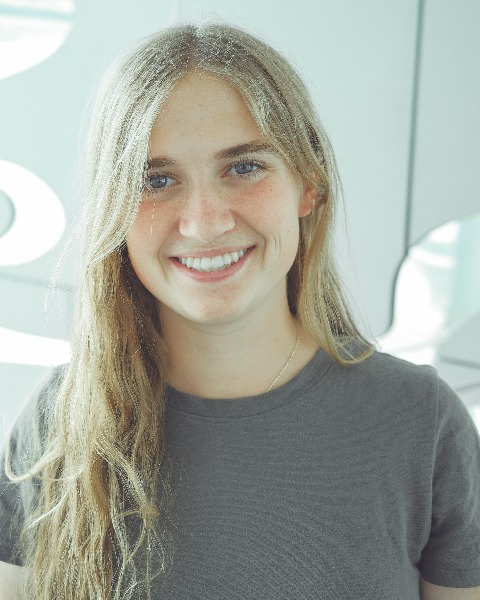Neural Engineering
Neural Engineering - Poster Session A
Poster K3 - Axon Geometry Impacts Activation Threshold: Implications for Deep Brain Stimulation
Thursday, October 24, 2024
10:00 AM - 11:00 AM EST
Location: Exhibit Hall E, F & G

Madison Lodico (she/her/hers)
researcher
University of Utah
Moline, Illinois, United States
Alan D. Dorval, PhD
Associate Professor
University of Utah Biomedical Engineering
Salt Lake City, Utah, United States
Presenting Author(s)
Last Author(s)
Introduction: Parkinson’s disease (PD) is the second most common neurodegenerative disorder in the United States and the number of Americans with PD is expected to double by 2040 according to the National Institute of Neurological Disorders. Deep brain stimulation (DBS) is a neurosurgical procedure used to treat many movement disorders such as Parkinson’s disease as well as other neurological conditions such as essential tremor, epilepsy, and dystonia. However, the success of therapeutic electrical stimulation varies greatly between patients and across
neurological disorders. According to Chaturvedi et al, a primary factor for this is electrode misplacement, one of the biggest sources of error in DBS treatment. One unaccounted-for factor that could significantly contribute to inaccurate electrode placement stems from using the
universally accepted straight axon model to estimate neuronal excitability as a function of contact location. Past work, such as Abdeen et al, relating to the success of DBS have typically assumed that using geometrically straight versus biologically meandering axon models is inconsequential. In this work, we quantify the changes in neuronal excitability as a function of axon curvature, independent of all other variables.
Materials and
Methods: To model different axon geometries, we implemented the Hodgkin and Huxley axon model in MATLAB, using standard conductivity, conductances, ionic potentials, and gating variables. We simulated circular, parabolic, and straight Hodgkin and Huxley axons responding to extracellularly applied currents, to identify their activation thresholds and response profiles. First, we created the axon geometries. To calculate the coordinates of a circular axon, the x and y coordinates of each compartment were calculated based on the angular positions according to a discrete step size and the desired circle radius. To calculate the coordinates of a parabolic axon, a binary search technique was used to adjust the compartment positions iteratively until the desired spacing between axon compartments in parabolic shape was achieved. Subsequently, we determined the extracellular potential profile along each axon induced by a single point contact located 1.0 cm away from the common location in all axons. Next, we calculated the first and second spatial derivatives of the extracellular potential along the axon, defined as the electric field and activating function respectively. Finally, we simulated the models responding to various amplitude currents to identify each axon geometry’s rheobase: the minimum current that caused an action potential.
Results, Conclusions, and Discussions: We found the rheobase for the standard model (i.e., the straight Hodgkin and Huxley axons) to be -5.55 mA, but varied markedly for the curving axons. We identified an 8-fold difference in rheobase between axons curving away from the electrode and axons curving toward it (see figure). Axons curving away from the electrode contact had substantially lower rheobases than straight axons; i.e., the curving-away axons could be activated with less applied current. In contrast, axons curving toward the electrode contact had substantially higher rheobases than straight axons; i.e., the curving-towards axons could only be activated with much more applied current. The amount of current required for activation for both parabolic and circular axons increased with tightening curvature until a parabolic stretch of 1.54 cm and a circular radius of 1.0 cm. At this maximum, the rheobase was -16.70 mA for the parabolic axon. Interestingly, the circular axon at this bifurcation could not be activated for any amount of current: a circular axon with a point electrode in the center cannot be polarized. For tighter curvatures, the required rheobase decreases as the axon gets closer to the electrode. Given the manifold change that axon curvature has on activation threshold, we propose that axon geometry must be included in any analyses of neuronal activation from implanted electrodes. Future work should leverage brain atlases to model curved axon tracts surrounding the subthalamic nucleus, a common region for DBS electrode placement. Subsequently, clinical imaging tools and preoperative MRI scans could be analyzed to define patient-specific axon curvature and determine electrode placements to optimize therapeutic efficacy.
Acknowledgements (Optional):
